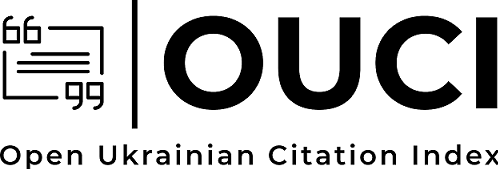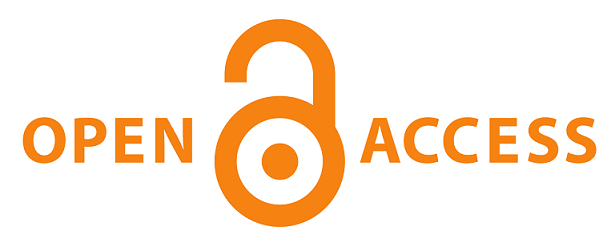Plagiarism prevention
The concept of plagiarism, compilation, fabrication and falsification
Plagiarism – publishing, in whole or in part, of someone else's work under the name of a person who is not the author of this work.
In science and education field, plagiarism is most commonly expressed as publication under one's own name of someone else's text without specifying the source of borrowing.
In general, plagiarism can be divided into three main types:
- Copying someone else's scientific work or several works and publishing the results under your own name.
- Creating a hybrid of your own and borrowed text without proper citation of sources.
- Rewriting – paraphrasing someone else's work without reference to the original author. This type of plagiarism, when done more or less thoroughly, is difficult to detect by modern technical plagiarism search tools.
The editorial board of the journal also urges authors to avoid such an occurrence as compilation and in no case resort to fabrication or falsification of data.
Compilation – the process of writing a research paper on the basis of other people's materials without independent research and elaboration of sources.
Fabrication – inventing data or facts used in the educational process or research.
Falsification – conscious change or modification of already existing data related to the educational process or research.
Recommendations for the prevention of academic plagiarism in research papers
In order to properly implement the Laws of Ukraine “On Education” and “On Higher Education”, to comply with the basic principles of academic integrity and to systematically approach the development of methods and means of detecting plagiarism in science and education field, the editorial board abides by its policy to the Recommendations developed by the Ministry of Education and Science Of Ukraine On the prevention of academic plagiarism and its detection in scientific papers (abstracts, dissertations, monographs, scientific reports, articles, etc.):
- Any text fragment from a sentence or more, expressed in the text of a scientific work without changes, with minor changes, or translated from another source, must be accompanied by a link to the source. Exceptions are allowed only for standard text clichés that are not attributed to authorship and / or are of common lexis.
- If paraphrasing or loose translation in a scientific work of a text of another author(s) occupies more than one paragraph, references (bibliographic and/or textual) to the corresponding text and/or its author(s) must be contained at least once in each paragraph of the scientific work, except for paragraphs that completely consist of formulas, as well as numbered and bulleted lists (in the latter case, it is allowed to submit one link at the end of the list).
- If a citation from a particular source is based on the original source, the text of the scientific paper should include a reference to the original source. If the citation is not given according to the original source, the text of the scientific paper should contain a reference to the direct source of citation (“cited by: …………”).
- Any scientific and technical information provided in the text of a scientific paper must be accompanied by a clear indication of the source from which the information was taken. Exceptions are made only for a matter of common knowledge recognized by the entire community of specialists in the relevant field. In case of using regulatory act text in the scientific paper, it is enough to indicate its name, the date of adoption and, if any, the date of adoption of the latest changes to it or a new edition.
- Any work of art reproduced in the text of a scientific work must be accompanied by an indication of the authors and the name of these artworks (if known). In case performing arts are used, individual or collective performers (if known) should also be indicated. If the authors / performers are unknown, it should be noted that they are unknown. In case is impossible to identify the author, title and / or performers of the work, it is imperative to indicate the source from which the work was taken.
Plagiarism detection procedure
In order to prevent plagiarism, at the primary stage of review, the editorial board checks all submitted works for authenticity, by identifying matches / identities / similarities, etc.
The submissions are checked for uniqueness using special software: Unicheck and Strike Plagiarism.
It is worth noting that modern plagiarism detection softwares are not perfect. There is a risk that different softwares, depending on the settings, the algorithm and the text comparison database, will show a different percentage. In this regard, for a more effective plagiarism check, such common textual components as the original data of the author, footnotes and bibliography are removed from the manuscripts during the check.
Plagiarism testing services are provided by the Library of Borys Grinchenko Kyiv Metropolitan University.
In the event that plagiarism is detected, the submission will be rejected without further consideration.
In the event of major plagiarism detection after the publication of the journal, the editorial board makes a decision on:
- 1) on conduction of an internal investigation in order to find out the main reasons for such a situation and its prevention in the future;
- 2) on retraction of the publication, indicating on each page of the electronic format of the article a watermark with the following text: “The publication has been retracted. The decision of the editorial board No.__ dated “__” “_____________” “20__”.
Self-plagiarism, Duplicate Publication and Self-citation
Self-plagiarism – publishing (in whole or in part) of one’s own previously published scientific results as new scientific results. In other words, it is a republishing of one’s own scientific texts without identification of references.
Duplicate Publication – publishing the same intellectual material several times in different publications, by the author or publisher.
Self-citation – indication of references to other own works in a scientific paper.
The Editorial Board encourages the authors:
- not to employ self-plagiarism as a means of increasing one’s own number of publications;
- not to resort to duplicate publication, namely: not to submit the same literary work for printing to other publishers at the same time or to send previously published materials to the editorial office, except for the provided exceptions (see below);
- to avoid self-citation as a means of increasing one’s own citation index.













